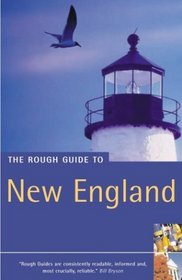Search -
Rough Guide to New England 3 (Rough Guide Travel Guides)
Rough Guide to New England 3 - Rough Guide Travel Guides
Author:
INTRODUCTION The New England states of Massachusetts, Rhode Island, Connecticut, Vermont, New Hampshire, and Maine often regard themselves as the repository of all that is intrinsically American. In this version of history, the tangled streets of old Boston, the farms of Connecticut, and the villages of Vermont are the cradle of the nation. It... more »
Author:
INTRODUCTION The New England states of Massachusetts, Rhode Island, Connecticut, Vermont, New Hampshire, and Maine often regard themselves as the repository of all that is intrinsically American. In this version of history, the tangled streets of old Boston, the farms of Connecticut, and the villages of Vermont are the cradle of the nation. It... more »
ISBN-13: 9781843530657
ISBN-10: 1843530651
Publication Date: 8/11/2003
Pages: 624
Rating: ?
ISBN-10: 1843530651
Publication Date: 8/11/2003
Pages: 624
Rating: ?
0 stars, based on 0 rating
Genres:
- Travel >> Guidebook Series >> Rough Guide
- Travel >> United States >> Regions >> Northeast >> New England




